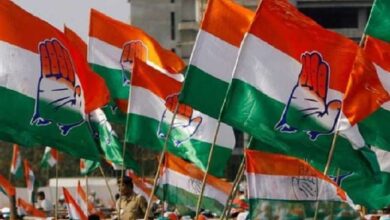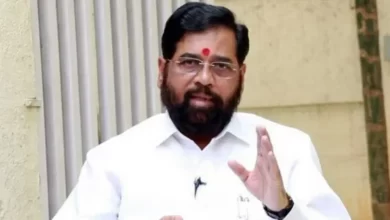How to become a model after all

The concept of Gram Swaraj was given by Mahatma Gandhi. At its core was labor and employment based education.
Pramod Bhargava
When the three-tier Panchayati Raj system was implemented in the country, its basic concept included the objective that rural development should be from bottom to top. That is why the Gram Sabhas were given the right to choose the development work in the Panchayat area.
The concept of Gram Swaraj was given by Mahatma Gandhi. At its core was labor and employment based education. But over time our rulers worked to anglicize education and criminalize child labor. The result is that education has become a factory of unemployment, and children are getting addicted to crime and drugs since adolescence. Governments do not have any meaningful solutions to solve these problems.
Therefore, either the so-called provisions for meaning-based development are made or there are little awareness campaigns. The government has resolved to transform nine thousand villages of the country under the Pradhan Mantri Adarsh Gram Yojana. Earlier, the Sansad Adarsh Gram Yojana was also started, which did not yield the expected results. Under the Pradhan Mantri Adarsh Gram Yojana, during 2014 to 2019, every MP was to make only three ideal villages in his Lok Sabha constituency in a phased manner.
After this, between 2019 and 2024, five more villages were to be built. But the MPs took no interest. There are about six and a half lakh villages in the country. But MPs could not make even a dozen villages ideal with their funds and imagination. The Central Government had also formed a Common Review Mission (CRS) with thirty one members for on-the-ground investigation of the ongoing development projects in the villages. This committee found in its investigation that the Sansad Adarsh Gram Yojana was not successful in its objective. Therefore the plan should be reviewed. May be, now the resolution of rejuvenation of nine thousand villages should be the result of this review?
The goals of all-round and inclusive development are not possible without making the village, farmer and farming prosperous. Despite all the measures of urbanization, even today seventy percent of the population lives in six and a half lakh villages of the country. That is why the world calls India a country of villages. This dream of village development scheme was important because changes are coming fast with time, so if the process of change in villages is not accelerated, they will lag behind.
If seen, this goal is not too big for an MP. They have sufficient MP fund. They are the leaders of the local politics and the administration is bound to work under their guidance. All-round development of the village would have become easier, if the MPs had expressed commitment towards the goal by coordinating this fabric with their leadership skills. But the MPs did not show any interest in developing the villages of their Lok Sabha constituency, but during this time it happened that even in the villages where there were no liquor shops, they were opened.
The debate continues whether the development of the village should be from top to bottom or from bottom to top. When the three-tier Panchayati Raj system was implemented in the country, its basic concept included the objective that rural development should be from bottom to top. That is why the Gram Sabhas were given the right to choose the development work in the Panchayat area. Anyway, the parliamentary constituency is so large that it is difficult for an MP to know the actual needs of each village. This is also not possible because most of our MPs come to their parliamentary constituencies on tours only.
His being a permanent resident in the parliamentary constituency has nothing to do with it. Therefore, they do not take much interest in the development of the area. Therefore, immediately after the Panchayati Raj came into existence, the Chief Minister who was influenced by Gandhian ideology and wanted to adopt a liberal approach from the administrative point of view, made the development process under Panchayati Raj from bottom to top. That is, from the decision of development works in many states to the appointment process of government jobs in district and district panchayats, the important role of Panchayati Raj had started coming to the fore. Karnataka, Gujarat, Maharashtra and undivided Madhya Pradesh have been prominent among such states.
When the influential role of Panchayati Raj was revealed, the MPs and MLAs felt that their importance was diminishing. As a result, a fierce battle broke out between the legislature and the Panchayati Raj. The legislature had alleged that due to adequate powers given to Panchayati Raj, there has been a direct reduction in the working area of MPs and MLAs and their role has been reduced to the representation of law maker sitting in Parliament and Legislative Assemblies. Interference in administration is almost over. Therefore, the shearing of Panchayati Raj started from above and the order of development process started deteriorating again. However, this protest was not at all moral and rational.
The existence of Panchayati Raj is related to the system of direct election through which the legislature gets the rights through the same system of democracy. In fact, inclusive democracy runs from a liberal mindset, not a clash of egos. The development process runs from the bottom, that is why the Administrative Reforms Commission has recommended to the central government to make the village panchayats more autonomous and empowered. If the process of development starts from the smallest unit of the constitution, the Gram Sabha, then the possibilities of basic development will increase, it can be expected.
We have two great examples of how the overall development of the village takes place. Among such ideal villages, one village is Ralegan Siddhi in Maharashtra and the other is Punsari village in Gujarat which is endowed with modernity. Ralegaon is such a village, where the entire population is educated and financially self-sufficient. Male or female, no one is unemployed. One person from most of the families in the village is in the army. The effective and fruitful measures of ax ban, sterilization, drug ban, grass grazing, shramdan, education and water conservation, which have been done by Anna Hazare’s efforts, are not limited to Ralegaon only, but three and a half hundred surrounding villages have also done the same. It has taken a path of revolutionary and unexpected development.
Today, onions worth billions of rupees are exported from Ralegaon alone. The grain-bank has been opened to deal with the situation like famine or drought. Surprisingly, no MP, MLA or bureaucrat contributed to this development, yet it became a unique model village of India. The second developed village is considered to be Pusanri. There are CCTV cameras in the street here. Community radio. There is good cleanliness. RO-water facility is available. There is a bus service for the cattle owners doing the business of milk. But not all people have jobs.
For example, they are not financially self-sufficient like the people of Ralegaon. All the people are educated or not even literate. Prohibition is applicable in the whole of Gujarat, so it is in Punsari too. Since this village is connected with technology, it is considered to be developed in the current thinking and perspective. Actually, development related to technology is such a development that is always incomplete. That is why it has been said that technology is like a snake that swallows its own children after giving birth. Now it is for our policy makers to think about what kind of development do they want – permanent or temporary?
,






